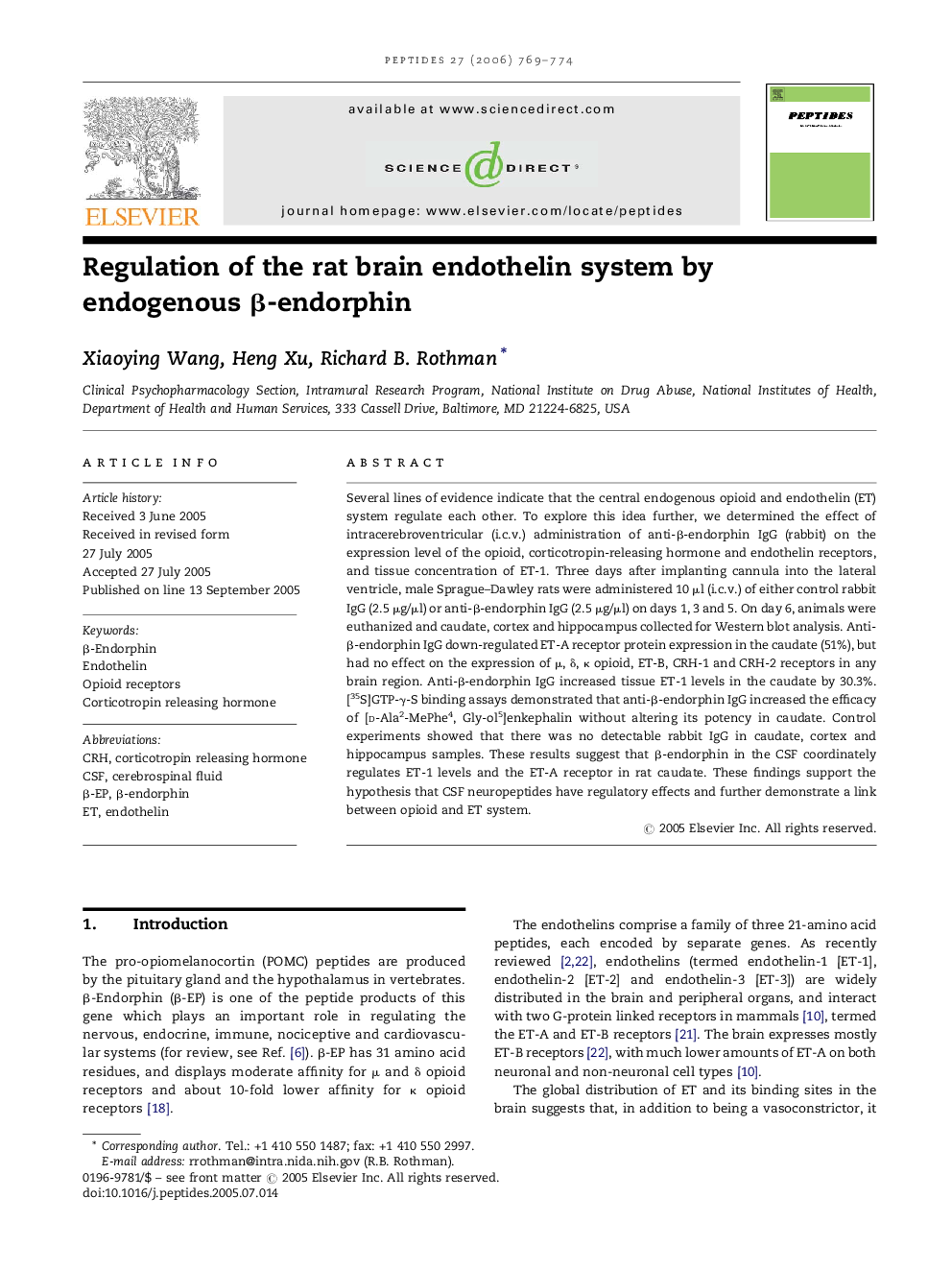| Article ID | Journal | Published Year | Pages | File Type |
|---|---|---|---|---|
| 2008335 | Peptides | 2006 | 6 Pages |
Several lines of evidence indicate that the central endogenous opioid and endothelin (ET) system regulate each other. To explore this idea further, we determined the effect of intracerebroventricular (i.c.v.) administration of anti-β-endorphin IgG (rabbit) on the expression level of the opioid, corticotropin-releasing hormone and endothelin receptors, and tissue concentration of ET-1. Three days after implanting cannula into the lateral ventricle, male Sprague–Dawley rats were administered 10 μl (i.c.v.) of either control rabbit IgG (2.5 μg/μl) or anti-β-endorphin IgG (2.5 μg/μl) on days 1, 3 and 5. On day 6, animals were euthanized and caudate, cortex and hippocampus collected for Western blot analysis. Anti-β-endorphin IgG down-regulated ET-A receptor protein expression in the caudate (51%), but had no effect on the expression of μ, δ, κ opioid, ET-B, CRH-1 and CRH-2 receptors in any brain region. Anti-β-endorphin IgG increased tissue ET-1 levels in the caudate by 30.3%. [35S]GTP-γ-S binding assays demonstrated that anti-β-endorphin IgG increased the efficacy of [d-Ala2-MePhe4, Gly-ol5]enkephalin without altering its potency in caudate. Control experiments showed that there was no detectable rabbit IgG in caudate, cortex and hippocampus samples. These results suggest that β-endorphin in the CSF coordinately regulates ET-1 levels and the ET-A receptor in rat caudate. These findings support the hypothesis that CSF neuropeptides have regulatory effects and further demonstrate a link between opioid and ET system.
